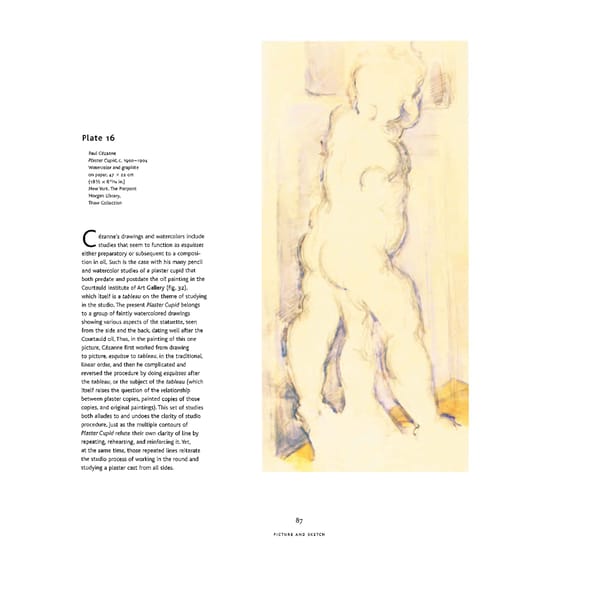Plate 16 Paul Cézanne Plaster Cupid, c. 1900-1904 Watercolor and graphite on paper, 47 x 22 cm 1 11 (i8 / x 8 /i6¡n.) 2 New York, The Pierpont Morgan Library, Thaw Collection Cezanne's drawings and watercolors include studies that seem to function as esquisses either preparatory or subsequent to a composi- tion in oil. Such is the case with his many pencil and watercolor studies of a plaster cupid that both predate and postdate the oil painting in the Courtauld Institute of Art Gallery (fig. 32), which itself is a tableau on the theme of studying in the studio. The present Plaster Cupid belongs to a group of faintly watercolored drawings showing various aspects of the statuette, seen from the side and the back, dating well after the Courtauld oil. Thus, in the painting of this one picture, Cézanne first worked from drawing to picture, esquisse to tableau, in the traditional, linear order, and then he complicated and reversed the procedure by doing esquisses after the tableau, or the subject of the tableau (which itself raises the question of the relationship between plaster copies, painted copies of those copies, and original paintings). This set of studies both alludes to and undoes the clarity of studio procedure, just as the multiple contours of Plaster Cupid refute their own clarity of line by repeating, rehearsing, and reinforcing it. Yet, at the same time, those repeated lines reiterate the studio process of working in the round and studying a plaster cast from all sides. 87 PICTURE AND SKETCH
 Cézanne in the Studio: Still Life in Watercolors Page 101 Page 103
Cézanne in the Studio: Still Life in Watercolors Page 101 Page 103